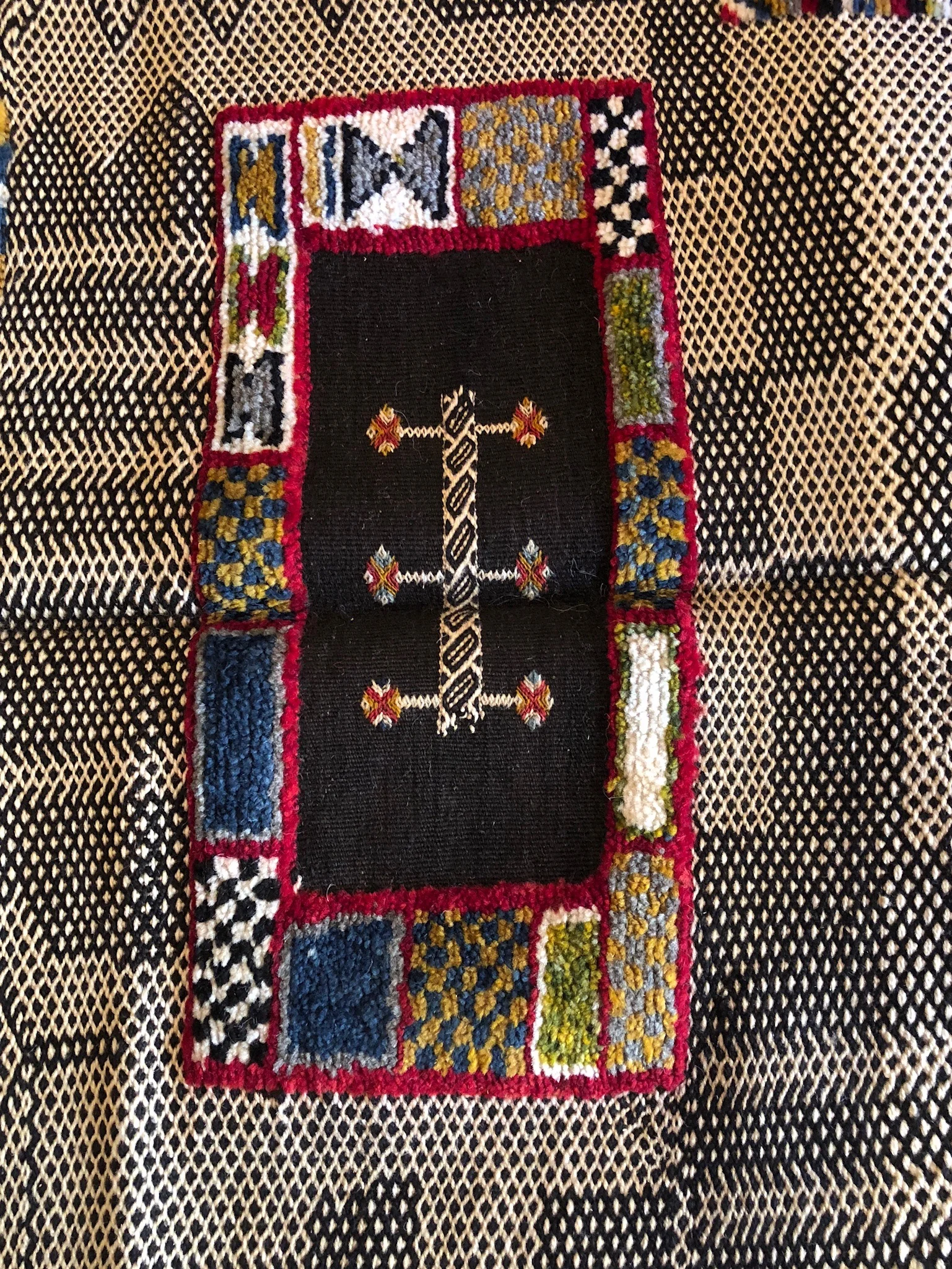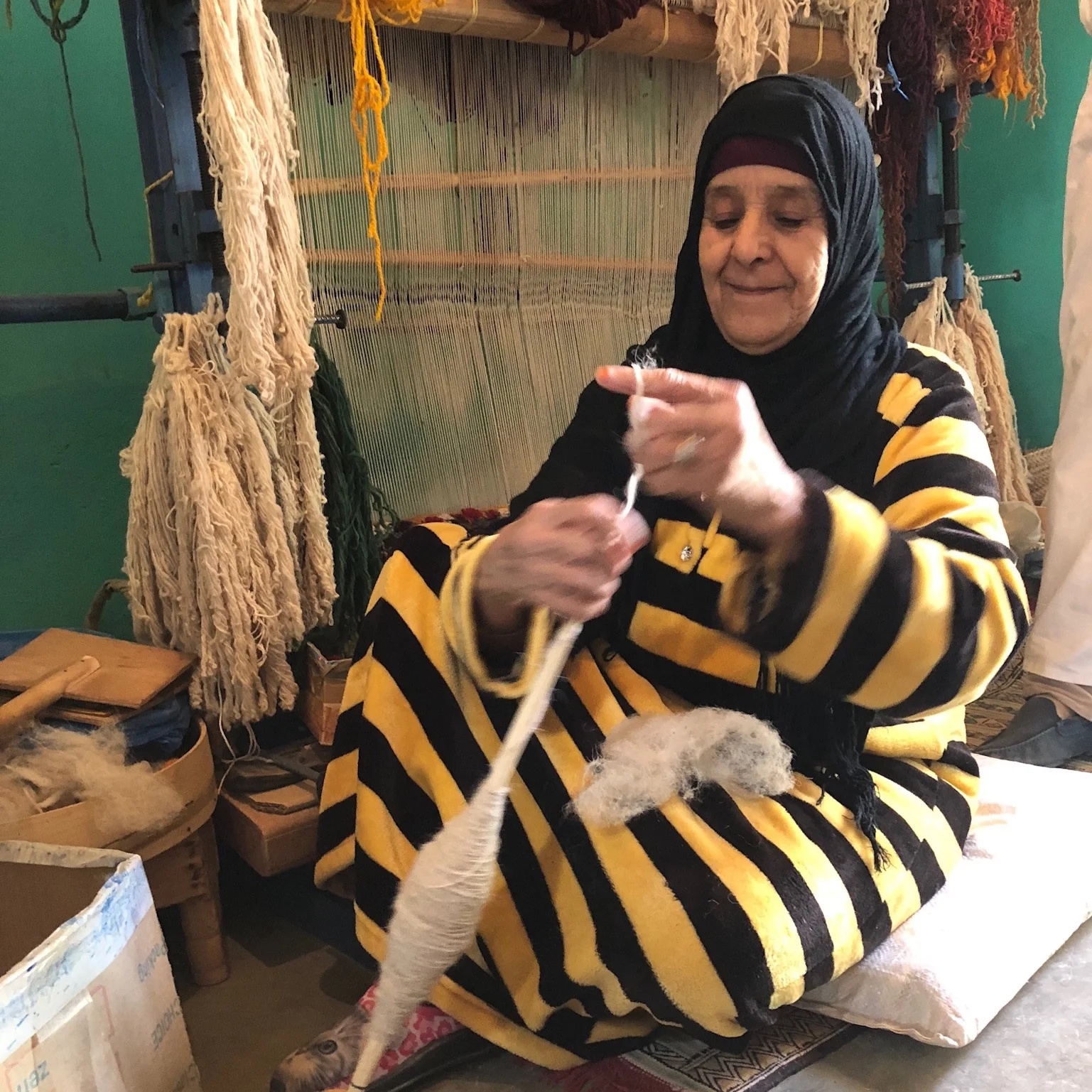Morocco is known for its incredible craftsmanship, not the least of which is its famous carpets. But who actually makes these rugs and why are they such an important tradition? On our Yoga & Art Morocco itinerary, we visit a rural Berber women’s textile co-op to see exactly how it’s done and how rug-making in Morocco is integral to sustainable development, women’s empowerment and cultural preservation. Our local guide, Adil, gives us key insight on this incredible tradition and household staple.
The Iklan Berber Woman’s Rug Co-op
The History
Tell us about how the history of the woman’s co-op. Who started it, when, and why? Give us some historical context.
The Iklan rug cooperative was founded in 2005 by the locals in collaboration with the Ministry of Culture and Artisanal Crafts. It was after Morocco started a development project called Sustainable Development in Rural and Remote Areas, which focuses on the social and economic factors that can benefit rural areas and create a substantial and sustainable income for the villagers.
Why rugs?
A traditional Berber symbol within the rug design.
How is this important in Moroccan society?
Traditionally, carpets were only made for local and family use. As a pillar of the family, the women would get together and make carpets for a duration of few months, from 3 to 9 months depending on the type and style of the carpet.
Carpets are made by women more than men primarily because men tend to go and work outside the house where the women are traditionally inside the house where the weaving happens.
Making a carpet is not only work but it's also a chance for ladies to go back and forth in conversations and know what's going on in the village. It’s also an art, a frame of emotions because what ever a woman feels and identifies herself with is shown in that carpet.
Making a carpet
Making a carpet seems very complex! What are the steps involved?
First is the creative process, as the designs and motifs on the carpets are purely from the imagination of the woman, often symbolic of how she feels on that particular day or representing tribal and cultural meanings like fertility and prosperity. Some rugs also reflect the surrounding landscape of that region such as desert or the Atlas mountains.
Spinning the wool, by hand.
As for making the rugs, there are many steps involved including:
Washing and drying the wool
Dyeing the wool and mixing the mélange
Carding the wool mixture.
Spinning the yarn and milling
Knotting the carpet
Shearing the carpet surface and knotting off the carpet
Providing with border ribbon or fringes and the finishing
Quality control and delivery to markets primarily in Fes and Marrakech
Lasting Impact
What makes the project sustainable and lasting for future generations? Why is it so important to the community?
Back in the days when a woman would finish a carpet, her spouse would take that carpet to the souk, either in the village or in big cities such as Marrakech or Fes to sell it in bigger carpet market at an organized auction.
Nowadays most of the dealers from these cities come to little villages such as Taznakht and buy from the maker then sell for an expensive price, which leaves the woman with very little income, as most goes to the seller and middle men.
The co-op’s main goal is to empower the women through income generation by keeping most of the earnings in her hands. The co-op keeps a register book that has the women's names and carpets that have been made, so when a rug is sold 90% of proceeds go back directly to the woman who made the rug and the other 10% is invested in the cooperative and the village community. This really helps create a healthy society. Additionally, the women preserve the art and ritual of carpet making for upcoming generations that are now busy with technology and show less and less interest in learning the ways of making a Moroccan carpet.
The community
Talk to us about the community that the women’s co-op is in.
The people of Taznakht are mostly Berbers with a dominant tribe called Znaga nomads of the mountains of Siroua speaking a dialect called Tachelhit from the main Berber language. Most of the Berbers of Taznakht village are farmers or carpet dealers.
The co-op currently serves as meeting place for the women of Taznakht to talk about day to day life, learning from each other as they are making rugs. In the past, women would hang out at their neighbor's place but may not be enough to host more than 3 women. The cooperative, however, can host many more people and all together hosts the works and creations of more than 120 women.
Want to visit Morocco and see rug-making in action for yourself? Join us for Yoga & Art Morocco!
And be sure to also check out these books to get you inspired for your travels to Morocco!

















You can’t travel to Morocco without experiencing once of its most essential experiences, a visit to the souk, or the traditional Moroccan market. As a tourist, you likely won’t have the chance for repeat visits like a local. However, it’s a great way to observe the culture in play while also learning to navigate the souks for yourself. Here are our top tips for a successful Moroccan souk experience.